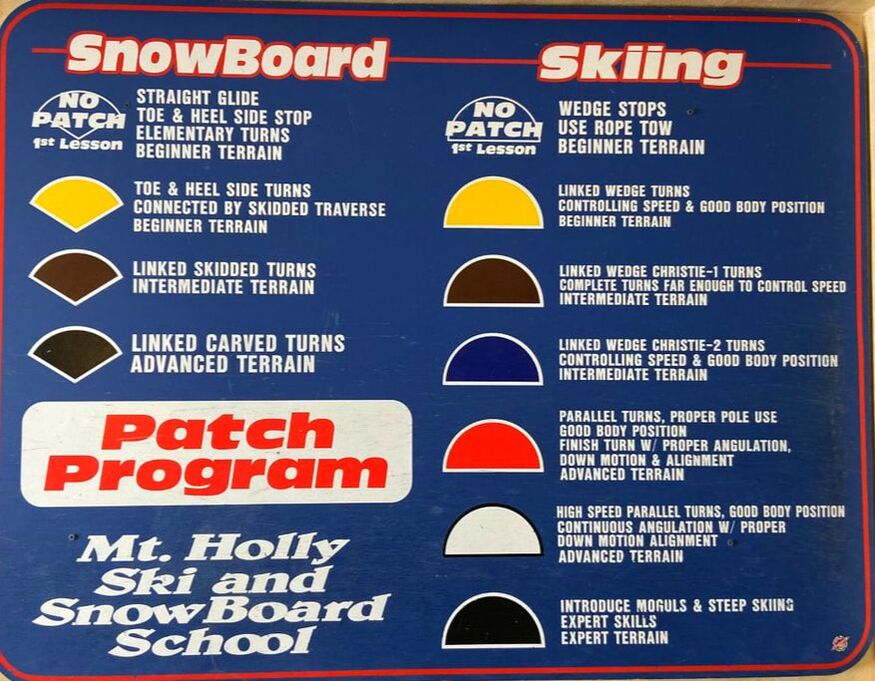The Patch Program is designed to help students ski and snowboard only on the hills that they can navigate safely and with control. The program is designed with the help of the ski school, ski patrol, and sponsors.
Our motto is “Safety, Fun, and Learning.”
Student ID Cards & Pricing
In order to participate in the Student Patch program, students must purchase either a Ski or Snowboard ID card from their club sponsor. The card entitles participants to ski or snowboard, on a restricted lift ticket, at reduced rates.
Additional Lesson Tickets are available from the Ski School:
$15.00 Lesson Ticket Skiing
$15.00 Lesson Ticket Snowboarding
- These rates are good Monday – Friday, Non-Holidays, from 3:00 p.m. until close.
- Use your Student Patch Program ID Card at Pine Knob or Mt Holly.
- There are no ski club lessons on Weekends or Holidays.
Adult ID Cards & Pricing
An opportunity for parents/guardians and students to ski as a family at reduced rates is available. The $30.00 Group ID Card provides adults with a discount off the normal lift ticket price ten times throughout the season. The real value comes on Ski Club night when parents get the same rates as the students.

ID Cards, lift tickets, and rental forms will only be available and sold through club sponsors, and they are never sold at the resort ticket windows. To take advantage of this opportunity, contact the club sponsor.
Student Club Patch Lesson Program
The student program consists of:
- Eight levels of lessons for skiers
- Five levels of lessons for snowboarders
Lessons are about 50 minutes long and start at:
- 5 and 6 p.m. at Mt. Holly – Monday – Friday
- 5 and 6:30 p.m. at Pine Knob – Monday – Friday
- Please note: Early in the season we may not offer lessons if there is little or no demand. If you sign up online and there are four or fewer people signed up, the lesson may not go out. Classes may be cancelled or combined without advance notice.

What to expect from Ski & Snowboard lessons
What to expect from ski lessons
Some students are very nervous, but instructors are taught to go at the right pace for the student. A larger problem is the expectation from the parents and students that skiers can quickly start using the chairlifts and skiing larger hills. Skiers naturally lean back, and then turn their shoulders and lean inside the turns. If they progress too fast, these moves become bigger problems that are harder to change later. It also makes it hard for the students to control their
speed and ski in a safe manner.
The new Green Patch will keep many students on gentle slopes longer, which helps them to progress faster later. Parents need to be patient, students and their friends usually want to progress too quickly, especially the first few times out. Every student is different, so there is a wide range in terms of how long it takes students to move through the patch program. Most students will require several attempts at each level.
Conditions also play a role. If the snow is fresh and light one time, it will be much easier than if the snow is icy or thick and heavy the next time. If a new skier misses a week or two, they will often need a lot of review to catch up, especially at the lower levels. Children who play hockey, inline skate, ice skate, or water ski may progress faster with skiing than children who do not participate in sliding or motion sports of this type. Older children usually progress quicker than younger children will.
White and Black patch skiers are very strong skiers. A minimum of four or more years of skiing experience is usually needed to acquire the skills. Children who have inappropriate equipment, too long, obsolete, boots that are too stiff or too large etc. may not progress as quickly or they may even regress. Parents and students need to be reminded that just because they ski “black diamonds” up
north or out west, it does not mean that they are performing the skill to receive a red, white, or black patch.
By enrolling your student in the patch program, you are agreeing to the rules of the program. Parents can not take their child on a lift that they have not earned a patch for – even just to practice! Your child will be instructed to walk back from the lift!
What to expect from snowboard lessons
Here are some very general guidelines that should help your students and their parents in understanding how a child might progress through the Student Snowboard Patch Program. Learning to snowboard at the beginner level requires quite a bit more strength and endurance, as well as having a higher frustration level than learning how to ski. Generally, it is easier for young kids to learn to ski.
We recommend that beginner snowboarders be at least 10 years old for the snowboard patch program. Very often beginner snowboarders will need to repeat lessons several times before
they are successful. The snowboard learning curve is different than for skiers. Snowboarding is harder to learn but easier to become proficient at; and skiing is easier to learn but may take years to become an expert. Using a ten year old child, as an example, a first year snowboarder who snowboards six times will typically earn a yellow patch (an advanced beginner/lower intermediate skill level). A second year snowboarder will typically earn a brown patch (intermediate level); and a third year snowboarder will typically earn a black patch (expert level).
Children who do gymnastics, skateboarding, inline skating, mountain biking, and sports that require balance and jumps may progress faster with snowboarding than children who do not
participate in sliding or motion sports of this type. Older children usually progress more quickly than younger children. Time out on the slopes and plenty of practice are needed to acquire the skills and earn the student patches.
By enrolling your student in the patch program, you are agreeing to the rules of the program. Parents can not take their child on a lift that they have not earned a patch for – even just to practice! Your child will be instructed to walk back from the lift!
